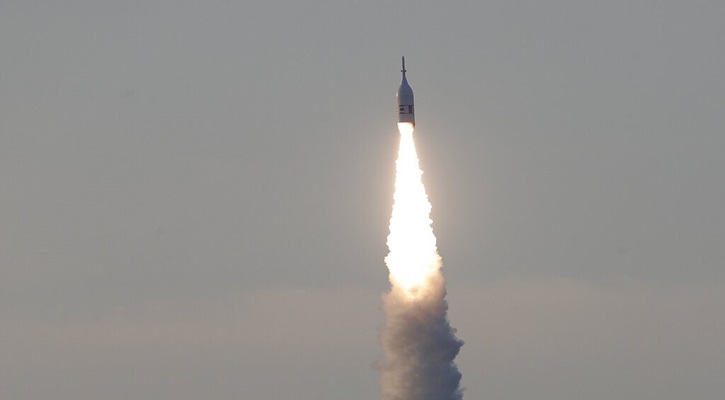Rolle im Portfolio
The iShares EURO STOXX (DE) is a suitable choice as a core building block. It offers broad equity exposure to companies based in the European Economic and Monetary Union (EMU). The ETF can also be used as a tactical tool to overweight a portfolio's exposure to the currency bloc's equities, or it can be shorted to bet against the performance of the underlying equities or to hedge existing positions. The larger number of constituents and the inclusion of mid and small caps together with large caps mean that the index is more diversified across both sectors and individual companies than the EURO STOXX 50. Specifically, the EURO STOXX index has a much smaller exposure to financials and consumer goods sectors and greater exposure to industrials. Investors should also be aware that French and German companies make up almost two thirds of the EURO STOXX index. So integrating this regional fund into a portfolio that has existing exposure to France and/or Germany might result in geographic concentration. Investors outside the eurozone should be mindful of the currency risk inherent in this euro-denominated fund. The performance of the euro relative to the investor's home currency will affect investor's return.
Fundamentale Analyse
The EURO STOXX NR lost about 15% of its value y/y to the end of June, reflecting a region plagued by investors' loss of confidence in the ability of its political leaders to ensure financial stability in the currency bloc.
As we write, investors remain concerned about the prospects of a Greek default. A full and unruly default by Greece could potentially cause a systemic collapse of the euro as the domino effect takes hold of weaker economies such as Spain and Italy.
The short- to medium-term outlook for the Eurozone economy remains highly uncertain and subject to substantial downside risks, including additional fiscal consolidation in many EU member states, further tightening of credit conditions as well as lower business and consumer confidence. The euro area is expected to fall into recession this year, with Italy and Spain contracting while France and Germany are expected to produce meagre growth.
Against this backdrop, the European Central Bank cut its main interest rates by 25 bps in July, taking the benchmark to a record low of 0.75% and the deposit rate to zero. Should inflationary pressures further dampen and downside risks to economic activity materialize, policy makers may consider another rate cut this year.
Meanwhile, uncertainty over a permanent resolution of the eurozone debt crisis will continue to weigh on banks most of which are feared to be under-capitalised. Following rounds of downgrades to European sovereigns’ ratings, each of the bank constituents of the EURO STOXX have been downgraded. Further downgrades are looming against a backdrop of fragile funding conditions, wider credit spreads, increased regulatory burdens and generally difficult operating conditions.
Meanwhile, looking at current market valuations, one might think that stocks in the region have become relatively attractive. While some investors may argue that the eurozone equity market is cheap for a reason, others believe that many sectors are already pricing in a negative outcome to the Eurozone sovereign debt crisis. Underpinning the belief that current valuations are low is the confidence that most of the companies making up the EURO STOXX will continue to benefit from the global recovery. Indeed, ongoing demand from emerging markets should continue to contribute positively to exporters’ earnings. Exporters in the region will also likely find comfort in a weakened euro. The euro was the worst performing major currency over the last twelve months (to the end of June) with a drop of 14% and 8% against the US dollar and sterling, respectively.
Indexkonstruktion
The EURO STOXX Index is a broad yet liquid subset of the STOXX Europe 600 Index. With a variable number of components, the index represents large, mid and small capitalisation companies of 12 Eurozone countries. The EURO STOXX, which is currently made up of approximately 314 constituents, is weighed by free-float adjusted market capitalisation. The index is reviewed quarterly for changes in composition and free-float. The industrial goods & services sector is the biggest sector represented, accounting for 10-11% of the index's value, followed by banks (9-11%) and chemicals (8-9%). French and German companies account for almost two thirds of the index. Spanish and Dutch companies weigh another 20%. The index is very well diversified from a stock perspective. Total is the largest component of the EURO STOXX with a 3-4% weighting. The second and third largest stocks represented are Sanofi-Aventis and Siemens.
Fondskonstruktion
The iShares EURO STOXX (DE) uses physical replication method to track the performance of the EURO STOXX net total return index. The fund buys all the securities within the index in the same weightings stipulated by the index. As of this writing, the fund does not engage in securities lending, which means that it is free of counterparty risk. Cash received as dividends from the underlying stocks is held in the income account of the fund until it is distributed to fund holders up to four times per year. This dividend treatment can potentially create a drag on returns in upward trending markets because dividends are not reinvested into the fund. In practice this cuts both ways. It could also result in outperformance if the benchmark falls.
Gebühren
The iShares EURO STOXX ETF charges a total expense ratio (TER) of 0.21%.
Alternativen
EasyETF is the only other provider offering an ETF tracking the EURO STOXX. Although this physically-replicated alternative levies a higher TER of 0.35%, it has performed slightly better than the iShares over the last two years and seems to benefit from higher liquidity on Euronext Paris as measured by its trailing 3-month average daily volume.
ETFs tracking the MSCI EMU index and the EURO STOXX 50 index are the most comparable alternatives. The two MSCI EMU ETFs charging the lowest TERs are from Amundi and ComStage at 0.25%.
The EURO STOXX 50 is the most widely-used index in Europe, so there are plenty of options tracking this alternative, available from multiple providers. The largest and most heavily-traded ETF tracking the index is the Lyxor ETF EURO STOXX 50 A, which trades on Euronext Paris. The fund charges a TER of 0.25%. The cheapest option is offered by db X-trackers with a TER of 0.00%. Investors interested in a more diversified exposure can look at the Ossiam ETF EURO STOXX 50 Equal Weight NR. By attributing the same weight to each of the index’s constituents, the fund seeks to avoid concentration effect. It charges an expense ratio of 0.30%.
Other options include ETFs tracking broader European large cap indices such as the MSCI Europe and the STOXX Europe 600. Again here, there is no shortage of options. All the major providers from iShares to HSBC offer funds that track the MSCI Europe at expense ratios ranging from 0.25% to 0.35%. There is also an iShares STOXX Europe 600 with a TER of 0.21%. The Xetra-listed fund has by far the most on-exchange volume of any of the ETFs tracking the STOXX Europe 600.
















